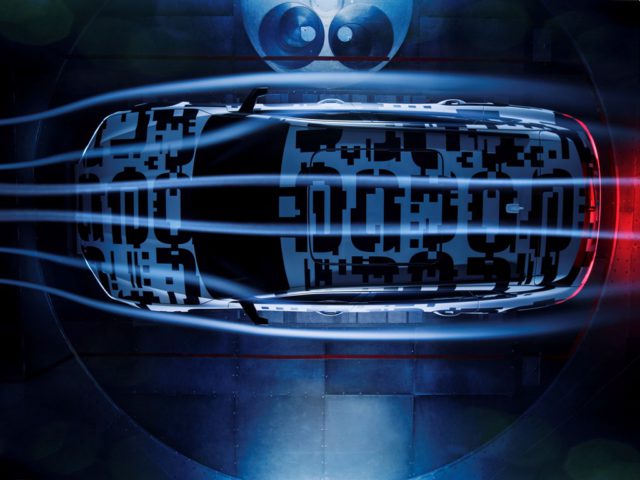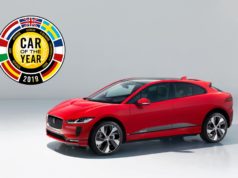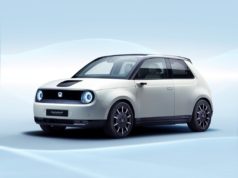The better an electric car’s aerodynamics, the further it travels. With a drag coefficient of 0.28, the Audi e-tron prototype achieves a top result in the SUV segment. This figure is a decisive factor in the everyday range of more than 400 kilometres (248.5 mi) in the WLTP cycle. The virtual exterior mirrors constitute one highlight in the aerodynamics concept of the all-electric premium-class model.
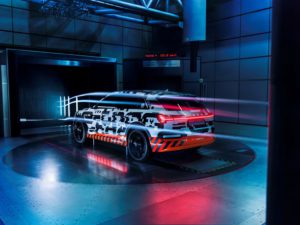
The scenario: endurance tests in the wind tunnel
In front of the low-noise rotor measuring around five meters (16.4 ft) in diameter, the Audi e-tron prototype stares into the eye of the hurricane. On the aeroacoustics test rig in the Wind Tunnel Center in Ingolstadt, the world’s quietest vehicle wind tunnel, the Audi engineers optimize drag and noise under extreme conditions. Both are crucial for a car’s efficiency and comfort. With an output of 2.6 megawatts, the fan produces speeds of up to 300 km/h (186.4 mph). The Audi e-tron prototype was put through over 1,000 hours of testing here.
The result: a drag coefficient of 0.28. Customers benefit directly from this low figure. Drag contributes decisively to the high range of more than 400 kilometres (248.5 mi) in the WLTP cycle. A hundredth of the drag coefficient figure represents a range of around five kilometres (3.1 mi) driving under everyday conditions.
A special apparel for a special car: The Audi #etron prototype’s camouflage design has become a designer piece in itself. #ElectricCar pic.twitter.com/EBsKdxHju7
— Audi (@AudiOfficial) May 27, 2018
Drag: essential on long journeys
On long journeys where the Audi e-tron prototype is perfectly at home, the drag constitutes the key driving resistance – far more important than the rolling resistance and inertia. The energy is lost which the car needs to overcome this resistance. That is why good aerodynamics are so important. In urban traffic, however, other factors come into play. Here an electric car can recover a large part of the used energy when braking, thereby reducing the importance of its mass.
To achieve the drag coefficient of 0.28, the Audi engineers developed a wide range of aerodynamics measures in all body areas. Some of these technical solutions are evident at first glance, while others fulfil their purpose hidden away from sight. Thanks to these solutions, the drag coefficient for the Audi e-tron prototype is almost 0.07 less than for a comparable, conventionally powered vehicle. With a typical usage profile, this set-up increases the range by around 35 kilometres (21.7 mi) per battery charge in the WLTP cycle.
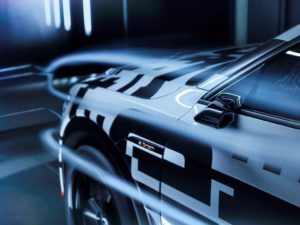
Smart solutions: virtual exterior mirrors and dimples on the underbody
The optional virtual exterior mirrors will be making their world premiere in the volume-production version of the Audi e-tron prototype. They are much narrower than the standard mirrors. They reduce the vehicle width by 15 centimetres (5.9 in). And, thanks to their new shape, not only reduce drag but also noticeably cut the nonetheless low wind noise. Each of their flat supports integrates a small camera. The captured images appear on OLED displays in the transition between the instrument panel and door. The virtual exterior mirrors can be adapted for various driving situations, thus potentially improving safety. Three views are available in the MMI system – for highway driving, turning and parking.
Another important factor is the standard adaptive air suspension – a pneumatic suspension with adjustable damping
At speeds above 120 km/h (74.6 mph), it lowers the body by up to 26 millimetres (1.0 in) below the normal position. Thus it reduces the drag. The underbody of the all-electric SUV is fully enclosed; the front and rear area are fully panelled. Underneath the passenger cell, an aluminium plate protects the high-voltage battery against damage from below, such as stone chipping or curbs. Its bolting points come with bowl-shaped indentations, similar to the dimples on a golf ball. They make the air flow much better than a totally flat surface.
The controllable cool-air inlet – a frame behind the Singleframe with two electrically operated louvers – also helps lower drag. When shut, the air in this area flows with virtually no swirl. As soon as the drivetrain components need cooling or the air conditioning condenser requires ventilation, the top louver opens first and then both louvers. When the hydraulic wheel brakes are subject to high loads, the controllable cool-air inlet opens and releases two ducts which channel the cooling air into the front wheel arches to the brakes.
The side air inlets at the front of the Audi e-tron prototype incorporate additional ducts, which are clearly visible from outside, to the wheel arches
They channel the airstream so that it flows past the outside of the standard aerodynamically optimized 19-inch wheels. Their design is flatter than with conventional wheels. The 255/55 size tires stand out with their ultralow rolling resistance. Even the tire sidewalls add to the aerodynamic design – the lettering is negative instead of raised.
Extreme conditions? Piece of cake for the Audi #etron prototype as proven in Swedish Lapland. We tested various requirements in extreme cold on the tracks of the vast terrain one last time before its market launch. #FullyElectric pic.twitter.com/TJVgNKsDjI
— Audi (@AudiOfficial) May 20, 2018






















